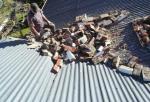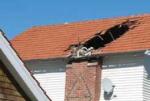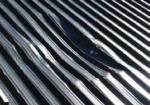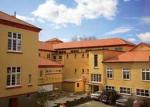Safety First
When people talk about products being sustainable, they usually focus on its carbon footprint or energy efficiency but the safety of a product is just as important.
And product safety covers all sorts of facets: from the safety of the workers that make it to how safe the product is to use and recycle. When you look at metal roofing, the safety of the product has improved in many areas to a level that not only meets all guidelines, regulatory requirements and standards but sets a benchmark for products and is based on continuous improvement. At manufacturing workplaces such as New Zealand Steel there is a constant drive for improved safety. New Zealand Steel has a goal of Zero Harm as it believes all injuries can be prevented.
The process of manufacturing the roofing material involves cold forming the steel produced by the steel mills. The manufacturers all strive to achieve the same goals in manufacturing safety resulting in machinery being designed for safety as well as fabricating product. The safety culture continues to the installation of the roof. Lightweight metal roofing is inherently safer to install with less weight to be man handled. The industry has a high awareness of safety and the leading organisation in New Zealand representing the roofing installers, the Roofing Association of New Zealand (RANZ), has a safety-led culture which is reflected on the job site where safety is not to be compromised. RANZ has developed guidelines about working at height that encourage the use of harnesses and safety mesh to prevent falls. Because steel is ductile and not brittle, metal roofing can withstand heavy impact loads from falling debris without breaking. Such debris can be as a result of storms blowing branches onto roofs, earthquakes with chimneys falling onto them and hail from severe storms. In 1999, Sydney suffered a massive hailstorm resulting in hundreds of millions of dollars damage from broken roofs made of clay tiles, losing weathertightness and causing consequential water damage to properties. Steel roofs were dented (along with thousands of cars) but remained intact when the storm dropped an estimated 500,000 tonnes of hailstones causing damage calculated to cost more than $2 billion.
Light metal roofs also perform better in earthquakes as shown by a study conducted by Andrew Buchanan and Michael Newcombe, of the Department of Civil and Natural Resources Engineering, University of Canterbury, who looked at the after-effects of the major earthquake in Christchurch last September. Falling concrete or clay tiles are a danger in an earthquake but more damage was caused by chimneys collapsing on to roofs. Buchanan and Newcombe found: “Chimney collapse on to corrugated steel roofing often caused no further damage, depending on the height of the chimney, but some fell through the roof or caused rafter failure. Chimneys falling on to tile roofs (concrete or clay tiles, or slate roofs) more often fell through into the house, sometimes causing further structural damage and potential loss of life.”
That finding is backed up by United States professor V.V. Bertero of the Department of Civil Engineering and Earthquake Engineering Research Center, who published a paper in 1997 designed to teach students of structural and architectural engineering about building earthquake-resistant structures.
One of his guidelines was that a structure “should be light [weight] and avoid unnecessary masses”. Bertero looked at buildings hit by major earthquakes in Alaska, Argentina, Algeria, California, Guatemala, Japan, Nicaragua and Venezuela. After a Californian earthquake, he observed that there was extensive damage to wooden houses from heavy tile roofs falling into the structures.
“All of these old buildings suffered significant damage and were subsequently demolished,” Bertero said. “The lessons from such damage are clearly to avoid the use of unnecessarily heavy roofs and unreinforced masonry.”
Metal roofing is also becoming safer to use in high-wind areas with the use of screws rather than nails and the advent of load spreading washers – or cyclone washers – which lessen the chances of the roof tearing off in high winds. And Gerard Roofs has developed a system of interlocking metal tiles secured in place with a unique horizontal fastening system. The result is a very strong roof with superior wind resistance, which allows specification in very high wind zones. High winds blowing over a roof cause a difference in air pressure between the inside and outside of the roof, causing the roof to lift. The stronger the wind, the higher the pressure differential, the greater the uplift. Wind uplift can cause vertical fastenings to be simply pulled out whereas with the
horizontal fastening method used on Gerard Roofs the fasteners must shear off for the roof to fail – and there are eight fasteners holding down each tile.
When it comes to using a metal roof, because it is lighter – about a sixth of the weight of concrete tiles – it is safer structurally as it isn’t prone to settling or sagging which heavyweight roofs can be subject to over time, reducing the risk of doors or windows jamming or cracks in claddings occurring which could then be prone to water ingress. Families can rely on a metal roof to keep them and their possessions safe and dry.
When Whangarei Girls’ High School was identified as needing remedial seismic work as part of a nationwide structural survey of all schools undertaken by the Ministry of Education, it opted to replace its clay tiles with a metal roof. That’s because modern earthquake standards demand that schools with concrete or clay tile roofs replace them with lighter metal roofs or face hefty costs to reinforce their buildings if they want to keep their heavyweight roofs.
In the case of Whangarei Girls’ High School, engineers came to the conclusion that the walls mainly needed to be strengthened because they were supporting a heavy clay tile roof. By removing the clay tiles and replacing them with a metal roof, the required strengthening was limited and this significantly reduced costs. The school wanted to maintain the look of the clay tiles so they were replaced with Gerrard Roof’s Tuffcoat Tile in Marseille Clay. The end result was a strong, light metal roof that was still in keeping with the original building.
The new roof – all 2800sq m of it – weighs 12.76 tonnes compared to the estimated weight of 70 tonnes for the clay tiles. Cutting the weight of the roof by 57 tonnes meant the building required much less reinforcing to meet modern earthquake standards and makes it safer in an earthquake. Having to disassemble the old roof at the school highlighted another advantage that lightweight roofing has over heavyweight roofing: it’s not only easy to install, it’s much
easier and safer to remove when the time comes.
Whereas a metal roof can be replaced relatively safely and easily, removing the clay tile roof at Whangarei Girls’ High School was a major project in itself, requiring a lot of labour and equipment. The job was done in stages over a ten-week period so as not to disrupt school activities and required an extensive
screen of protective scaffolding, loading platforms and a rubbish chute.
Metal roofs also come out tops when homeowners are looking for a safe water supply. BRANZ says metal roofs are safe to collect rainwater from but a check should be made to ensure there is no lead, chromium or cadmium in the roof and its flashings or in any soldering or paint. The ease of collecting rainwater from a metal roof is safer for the environment as it cuts stormwater flows that lead to erosion or contamination of rivers and oceans.
And when a metal roof needs replacing, the old one can be safely melted down and re-used in other steel products.
Recycling steel is safer for the environment and scrap metal is a vital part of the process for New Zealand’s two steel-makers. Pacific Steel, a division of Fletcher Building, makes all its steel from scrap. New Zealand produces about 500,000 tonnes of scrap metal a year. Pacific Steel uses about 300,000 tonnes
of that to make products such as reinforcing steel and wire, with the rest of the scrap metal being exported.





